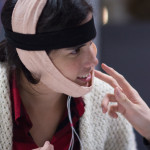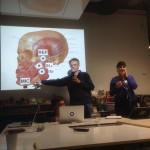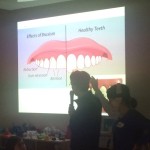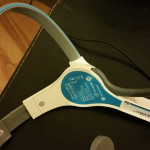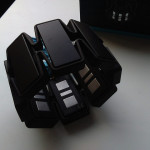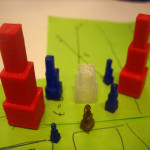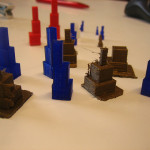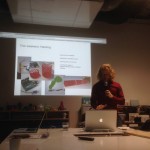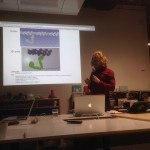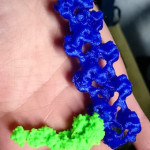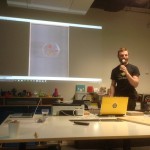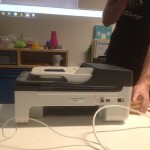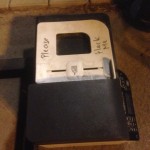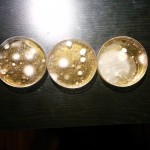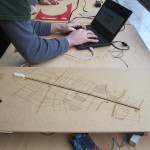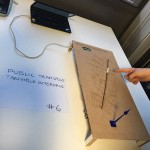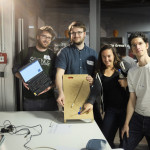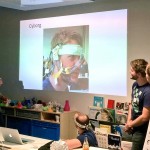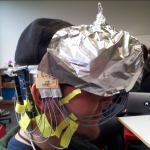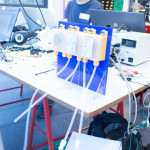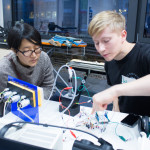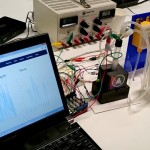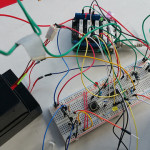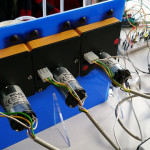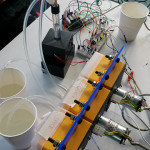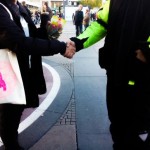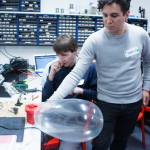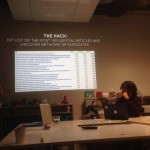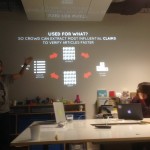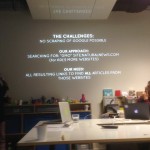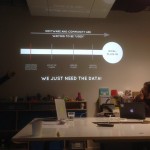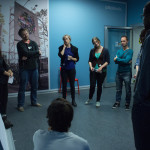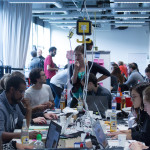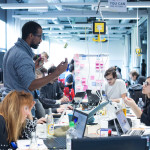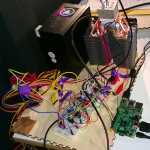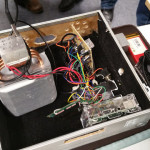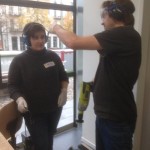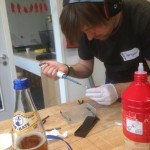Science Hack Day Berlin 2015 – The Hacks
Wow. Much hack. So project.
Documentation collected from our hackathon etherpad plus other sources.
- BRUXI – Teeth Grinding Detection Device **AUDIENCE FAVOURITE**
- BrainMusclePyramid **BEST ART/SCIENCE HACK**
- Artificial Muscle **BEST HEALTH HACK**
- Extreme Weather early warning
- Scanner Timelaps **BEST SCIENCE HACK**
- Public transport tangible interface **AUDIENCE FAVOURITE** & **BEST DESIGN HACK**
- NIR-Brain-HEG
- Evolution Machine
- THE ENFORCED CONSCIOUS NETWORK DEPARTMENT **BEST DATA HACK**
- WorldBrain – Verifying the Internet with Science
- The Machine To Be Another Research Toolkit 1: Empathy (TMTBART1:Empathy) **BEST INTERACTION HACK**
- algorithms are our friends, hacks from the front line.
- Scanning Tunnelling Microscope (STM) **HARDEST HACK**
- PCR Thermocycler **BEST HARDWARE HACK**
1. BRUXI – Teeth Grinding Detection Device **AUDIENCE FAVOURITE**
Team: Malte, Begoña, Daniel
Creating a wearable device to detect whether the user is grinding their teeth, providing feedback both to the user and their dentist.
2. BrainMusclePyramid **BEST ART/SCIENCE HACK**
Team: Byrke, Iwan, Miga
AAARGH TTIIIIIME TIME! PROCESSING, 3D PRINTER! BRAIN SCANNER! MUSCLE SENSOR! Squeeze sensor too, all to build a pyramid in processing to be printed out on makerbot
VIDEO: http://youtube.com/watch?v=RSvn69eaM5I
PHOTOS https://www.flickr.com/photos/qubodup/albums/72157660395415885
3: Artificial Muscle **BEST HEALTH HACK**
Team: Georg Buchner, Flo Schwaighofer, Natalie Krischke, Dr. Arne Jenssen
Creating artificial muscle for 3d printing robots. 1. rebuilding nature – creating/printing a model, 2. develop own concept(s) for contraction mechanism in muscle-like structures (artificial muscles) that can be used in robotics and implement one concept.
PRESENTATION (pdf): goo.gl/Y8UGtq
4. Extreme Weather early warning
Team: Abe, Mario, Peter, Peter, Marlene, Jascha, Dim, Kai
Displaying observed and forecast atmospheric data together with indicators to visualise phases of the Jetstream associated with extreme weather.
The idea is to put all the info on a web page for everybody to access.
https://github.com/JetStreams/extreme-weather
5. Scanner Timelapse **BEST SCIENCE HACK**
Team: Adam, Tereza
Using a scanner to capture sequence of pictures is uniform timesteps, then converting them to a video. Code obtained by modifying the following source: https://code.msdn.microsoft.com/windowsapps/Scan-Runtime-API-Sample-5703b7a2#content
Video timelapse—disolution of jam in water:
Shout out to the organizers for a great #SHDB15 . Attached is a timelapse using made with an old scanner. pic.twitter.com/XlD8WKQ4VJ — Adam Streck (@AdamStreck) 26. Oktober 2015
6. Public transport tangible interface **AUDIENCE FAVOURITE** & **BEST DESIGN HACK**
Team: Joram, Matt, Michaela, Tom, nicc
Building a physical interface to display and provide minimalist information based on open data provided by the public transport service in Berlin.
The installation shows in a nice intuitive way where the train for your daily commute is:
a miniature train moves on a schematic map of the neighborhood around your house and an indicator changes from a RED “STAY” sign to a GREEN “GO” sign (as in “Should I Stay Or Should I Go”) to see how far the next train is from your station and whether you have to run, can casually walk or still have plenty of time.
3D printed train model + TV tower, laser cut map on MDF, powered by Arduino+motors, Python data server, ideally real-time Berlin public transport data
everything is on https://github.com/matthuska/transit
+ Blogpost+photos+video http://ohyouhere.de/shdb2015/
7. NIR-Brain-HEG
Team: Eric, Josef, Sven, Stephie, Lucien
With this Bio-Neuro-Near Infrared-Feedback-Device you can learn how to consciously certain parts of your brain here specifically the prefrontal cortex. For example, this could be used to train the ability to get and stay focussed. This is done by measuring the reflectance of red and infrared light which changes due to the amount of oxygen in blood.
PRESENTATION (pdf): goo.gl/eqK5fg
8. Evolution Machine
Team: Claudia, Benji, Johann, Maxim
Live monitoring of bacterial growth in an automated longterm evolution experiment.
WEBSITE: http://open-evolution-machine.herokuapp.com/data_points#
9. THE ENFORCED CONSCIOUS NETWORK DEPARTMENT **BEST DATA HACK**
Team: Joana Moll, Sebastian Herrlinger, Pablo Rojas, Nenad Popov
Chrome plugin that measures the real-time traffic generated by a website and the CO2 emisions derived by it. We created a visual analogy of the CO2 production by inflating a latex balloon. The amount of air pumped into the ballon is synchronized with the real-time CO2 measurements calculated by the plugin. Therefore, the project acts as a symbolic agent which seeks to reveal the link between our actions and their material impact on the physical world, and aims at creating a mechanism that may trigger thoughts and actions that stimulate and re-appropriate subjectivity. I believe that this is an essential process in the generation of critical thought about the true nature of technology, and in the imagination of alternative techno-paradigms which may coherently respond to our environmental and human conditions. Find the source code, which includes the plugin here.
The enforced conscious network department – tracks the CO2 footprint of webtraffic #SHDB15 pic.twitter.com/QUSXRJDXFS — Science Hack Day BLN (@SHD_Berlin) 25. Oktober 2015
10. WorldBrain – Verifying the Internet with Science
Team: Oliver, Hector, Akram
A plugin with which you can check the facts of science related articles and blogposts with just one click. The hack is to compile a hitlist of the most influential articles around the topic of GMOs and how those articles are shared among different online outlets.
11. The Machine To Be Another Research Toolkit 1: Empathy (TMTBART1:Empathy) **BEST INTERACTION HACK**
Team: Zach, Kathi, Jemma, Arthur, Marie, Mike, Sarah, Eloi, Aurelia, X, Y
An interdisciplinary Toolkit for technological social science research on Empathy for The Machine To Be Another http://www.themachinetobeanother.org/
Connecting desires and opportunities for emergent technologies for hackers, artists, designers and scientists. Interdisciplinary, design thinking based approach. Open Source philosophy. We developed the toolkit and three application scenarios for designing experiments based on transmitting biosignals between people: Couple’s Therapy / Cross Empathizing, Mobile TMTBA / Mobile Empathy, Stimulating Empathy
12. algorithms are our friends, hacks from the front line.
Team: Brian
Amazon algorithms and price observation
amazon and email
13. Scanning Tunnelling Microscope (STM) **HARDEST HACK**
Team: Anna, Felix, Luka, Philip, Thom
An STM, or scanning tunneling microscope, is a device that allows microscopy at such a fine resolution that individual atoms can be visualized. A very fine needle, with a tip just one atom wide, is moved over a surface. The electrical current flowing from the needle into the surface varies depending on the surface’s topography. With sufficient resolution, individual atoms can be seem as bumps on top on the surface.
During the Hack Day we built an approach mechanism with screws from an old ThinkPad for coarse approach, a motorized screw for fine approach, and a piezo for positioning the needle fractions of a nanometer above the surface. Inspired by the design of John Alexander, we used one of these cheap piezos found in musical greeting cards. For positioning the piezo, we opted for a digital solution, with a 16-bit digital-to-analog converter allowing for more than 60,000 steps. For measuring small currents, we took John’s design of a preamplifier, but instead of building an analog feedback loop, we desided to feed the output into an Arduino. The Arduino can then control the motor and piezo, thus automate the approach. Credit for the suggestion to try a motorized approach mechanism goes to Dan Berard who told us how tedious his manual approach mechanism is. Our setup:
For obtaining the needle with the fine tip, we pull and cut tungsten wire, a standard material for this purpose:
We did get interesting results, though they need to be verified. Once the approach mechanism is robust, the next step is adding x-y-motion for scanning the tip over surfaces.
The project is as much about getting hand on a powerful device as it is about education: Being able to understand how to build, use, and improve the microscope requires studying many fields of physics. It starts with classical mechanics for the approach mechanism (oscillations, dampening), and electronics for measuring tiny currents and regulating the motor and the piezo. Then there is solid state physics and crystallography for interpreting measurement results. Finally, and possibly most fun, is the field of quantum physics, which is necessary to understand effects at an atomic scale. In short: Learning to understand the microscope will bring you a long way towards becoming a true physicist.
Circuitry, mechanics, methodology and software to build a low-cost STM, are documented on our wiki and we are also on GitHub. Our goal is to encourage other enthusiasts rebuilding the STM easily for low costs at other Fab Labs and Hack Spaces.
14. PCR Thermocycler **BEST HARDWARE HACK**
Team: Patrick, Alessandro, Katrin, Eliot
PCR thermocycler hack for DIY biology. DNA may be extracted from cheek swabs or plant material and the thermocycler can be used to amplify a target DNA sequence.
TECHNICAL DETAILS: http://berlin.sciencehackday.org/files/2015/10/thermocycler_shdb_specs_v2.pdf

